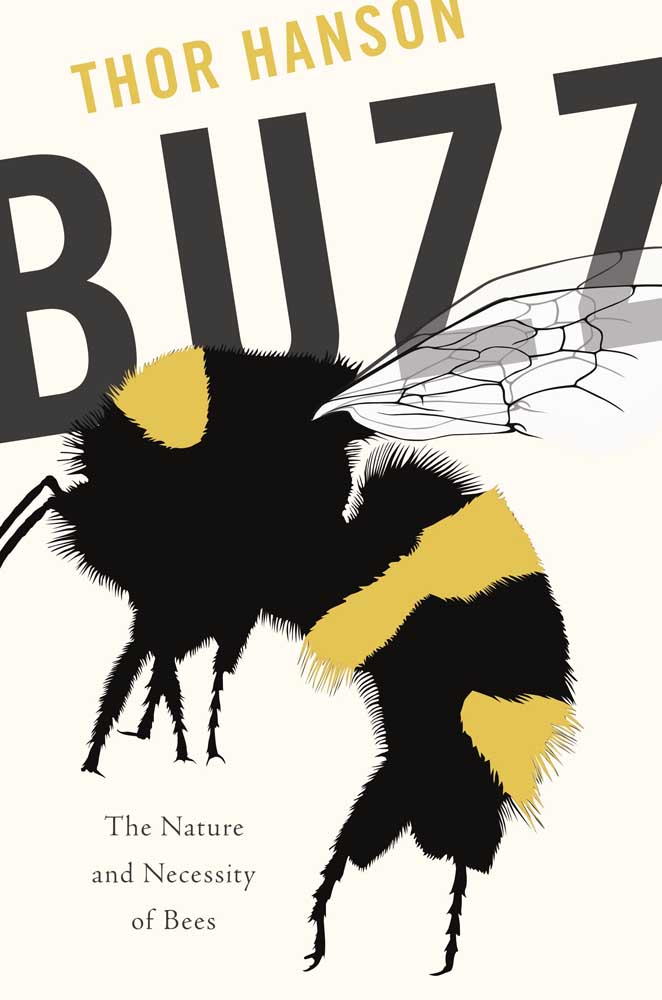Conservation biologist’s new book creates a buzz
Published 12:00 am Thursday, July 26, 2018

- "Buzz: The Nature and Necessity of Bees," by Thor Hanson, explores the many varieties of bees, their history and the threats to bee populations that could cripple human food production. (Submitted cover art)
Around 120 million years ago, the super continent Pangea was breaking into smaller land masses, massive dinosaurs still roamed the Earth and blossoming plants were starting to explode in diversity. At the same time a group of wasps evolved from being meat-eating predators, to provisioning themselves and their offspring solely with pollen and nectar from flowers. The planet’s first bees had emerged.
“Now, there are more than 20,000 bee species around the world — more than all the species of birds and mammals combined,” said conservation biologist and award-winning author Dr. Thor Hanson.
Trending
“Bees are the hippie, long-haired, flower-loving vegetarian wasps.”
In his latest book, “Buzz: The Nature and Necessity of Bees,” Hanson reveals his fascination with bees in their many varieties — from honeybees and bumbles to diggers, miners, leafcutters, and masons. He also explores the little-known history and existential threats now faced by bee populations. Hanson will discuss “Buzz” at events on Wednesday in Sunriver and Aug. 2 in Sisters.
“My interest in bees dates back to graduate school, where I was doing research on the pollination of big rain forest trees in South America,” Hanson said. “I’ve been shocked and alarmed at the headlines in recent years about bee decline and the challenges they face in the 21st century.”
Common misconceptions, new theories
While many are aware of the current plight of bees, Hanson was surprised at how little scientists and the general public know about bees themselves.
One of the most common misconceptions is that all bees are like honey bees, living in hives of thousands, surrounding a single queen. That’s actually the exception, with the vast majority of bees living solitary lives. Another fun fact: male bees do not sting. Bees’ stingers evolved from the egg-laying process, so only female bees can sting.
Trending
Hanson also delves into new anthropological theories that suggest bees have played an important role in the evolution of humans.
The research supports the notion that the collection of honey from wild hives by ancient hunter-gatherers likely provided a substantial portion of the calories required to fuel brain growth. Honey gathering may have also influenced and been influenced by the invention of better tools, mastery of fire and the invention of cooking. In essence, our primordial sweet tooth might have helped lead humans to where we are today.
Bees under threat
If you think the sting of declining bee populations won’t affect you, think again. Hanson points out these small insects have an outsize role in crop production, with approximately every third bite of food in the human diet coming to us from bees due to pollination.
While the classic symptoms of colony collapse disorder — where worker bees leave the hive to forage and don’t return — first recorded in 2006 have now dwindled, 30 to 40 percent of bees continue to be lost every year, across species far beyond honey bees. The experts Hanson consulted point to a combination of issues dubbed “the four Ps”: parasites, pathogens, pesticides and poor nutrition (due to the lack of flowers in many landscapes). All these factors interact and if a bee is weakened by one, it is more susceptible to the others.
“The good news is that colony collapse disorder has spurred research into honey bees and native bees,” Hanson said. “We know enough to take action by providing more flowers and better nesting habitats, and reducing use of pesticides to help make bees more resilient and improve bee health.”
Some multinational food corporations and commercial farming operations have begun taking measures to help bees such as providing cover crops and replanting native hedgerows.
At the individual level, people can plant more flowering and bee-friendly plants with staggered blooming periods such as lavender, catmint, borage, bee balm and coneflower to increase the flowering habitat. Leaving some bare or sparsely vegetated ground that isn’t covered with bark, or placing wood with holes drilled into it around your garden can provide nesting sites. Eliminating or significantly reducing use of pesticides and chemicals that bees are susceptible to is another important step.
In writing books about seeds, feathers and now bees, Hanson is taking mundane and often overlooked parts of nature and applying the fundamental curiosity of science to take himself and readers on a journey of exploration.
“One of the appealing aspects of my work is how much I get to learn about these fascinating subjects,” Hanson said. “I’m always extremely pleased when someone says, ‘I read your book and I can’t believe I liked it.’”








